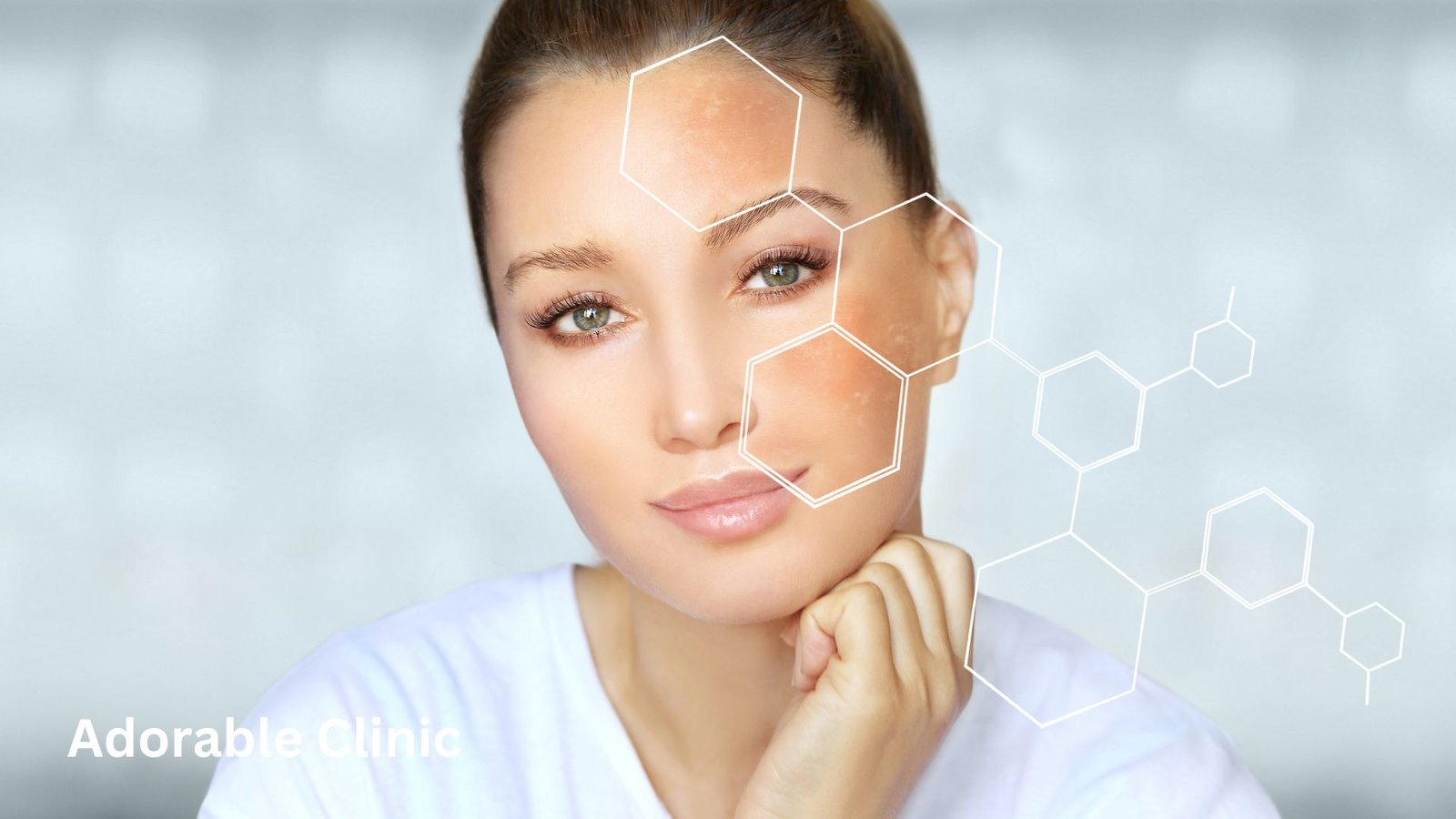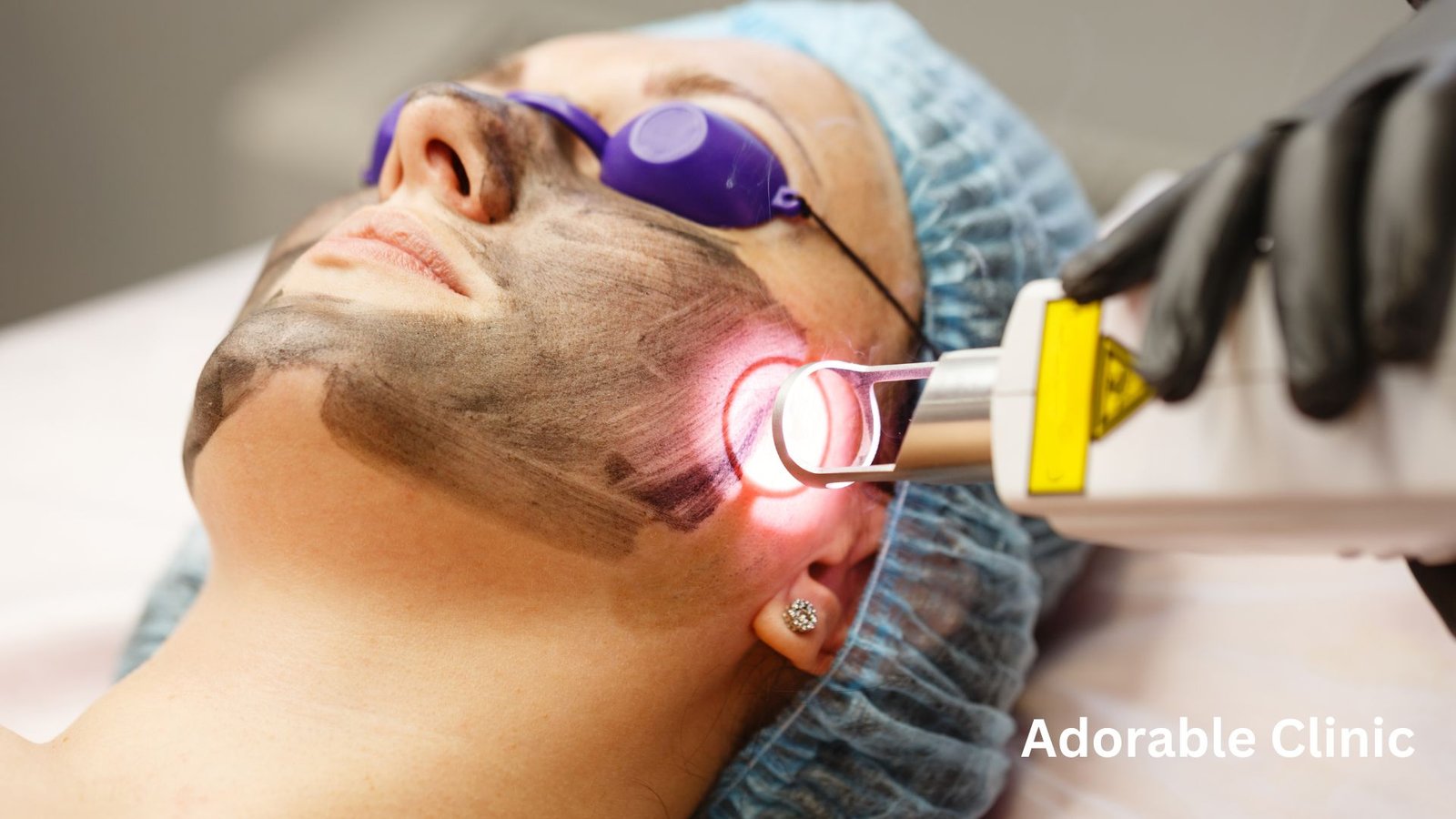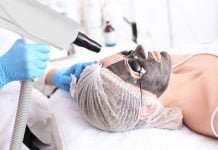Skin lightening has become a popular solution for individuals looking to achieve an even, radiant complexion and reduce pigmentation issues. Whether you’re dealing with sunspots, melasma, post-acne marks, or general skin discoloration, skin lightening treatments offer a range of options tailored to your needs. In this comprehensive guide, we’ll dive into four of the most effective methods: laser treatments, glutathione therapy, chemical peels, and topical solutions. We’ll also highlight the importance of seeking professional guidance to ensure the best results for your skin.
 What Is Skin Lightening?
What Is Skin Lightening?
Skin lightening, also known as skin whitening or brightening, involves reducing the production of melanin in the skin. Melanin is the pigment responsible for skin color, and an excess of it can lead to darker patches, hyperpigmentation, and uneven skin tone. The goal of skin lightening treatments is to create a balanced and more uniform complexion while maintaining skin health.
1. Laser Skin Lightening Treatments: Precision and Effectiveness
- How It Works: Laser skin lightening uses focused light energy to target and break down areas of excess pigmentation in the skin. This energy is absorbed by the melanin, which causes the pigment to fragment and eventually be removed by the body’s natural processes.
- Types of Laser Treatments:
- Fractional Lasers: These lasers treat a fraction of the skin at a time, promoting faster healing and reducing pigmentation while also improving skin texture.
- Q-Switched Lasers: Known for their precision, Q-switched lasers are effective in treating melasma, dark spots, and other pigmentation issues without damaging surrounding tissues.
- Intense Pulsed Light (IPL): Though not a laser, IPL uses similar technology to treat pigmentation, redness, and age spots while rejuvenating the skin.
- Expected Results: Laser treatments can show significant improvement in skin tone after a few sessions, with some patients noticing results after just one or two treatments. The procedure is quick, minimally invasive, and has minimal downtime.
- Side Effects: Common side effects may include temporary redness, mild swelling, or a sunburn-like sensation, which typically resolves within a few days. Proper aftercare and sun protection are crucial to avoid complications.
 2. Glutathione Therapy: The Antioxidant Powerhouse for Skin Brightening
2. Glutathione Therapy: The Antioxidant Powerhouse for Skin Brightening
- What Is Glutathione? Glutathione is a naturally occurring antioxidant in the body that helps to detoxify cells, protect them from damage, and reduce the production of melanin. It is considered one of the most powerful antioxidants for skin health and lightening.
- How It Works: When used for skin lightening, glutathione is typically administered as oral supplements, topical creams, or injections. The injections are the most potent form, delivering higher doses directly into the bloodstream for faster and more noticeable results.
- Benefits Beyond Skin Lightening: Apart from its skin-brightening effects, glutathione also promotes overall skin health, reduces signs of aging, and helps to clear toxins from the body, leading to healthier, clearer skin.
- Duration and Frequency: The frequency and duration of glutathione therapy depend on the individual’s skin condition and goals. Visible results may take a few weeks to a few months, with ongoing treatments required to maintain the effects.
- Possible Side Effects: While generally considered safe, glutathione injections should be administered under medical supervision. Some individuals may experience mild side effects like nausea or abdominal discomfort with oral supplements.
 3. Chemical Peels: Exfoliate and Rejuvenate for Brighter Skin
3. Chemical Peels: Exfoliate and Rejuvenate for Brighter Skin
- How It Works: Chemical peels involve the application of a chemical solution to the skin that removes the top layer of dead skin cells. This stimulates cell renewal, revealing smoother and more even-toned skin beneath.
- Types of Chemical Peels:
- Light Peels: These use mild acids like glycolic acid or salicylic acid to gently exfoliate the outer layer of the skin. They are ideal for minor pigmentation and can be done every few weeks.
- Medium Peels: Trichloroacetic acid (TCA) is used to penetrate the middle layers of the skin, effectively treating deeper pigmentation and age spots. Recovery time is longer compared to light peels.
- Deep Peels: Phenol peels penetrate deeply into the skin and are used for severe pigmentation issues. These peels have a longer downtime but provide dramatic results.
- What to Expect: Chemical peels can lead to temporary redness, peeling, and sensitivity to sunlight. Post-treatment care is crucial to avoid any complications and to maintain the results.
- Results: Depending on the depth of the peel, results can range from a brighter, more even skin tone to a significant reduction in pigmentation and fine lines.
4. Topical Solutions: Easy Integration into Daily Skincare
- How They Work: Topical solutions for skin lightening are formulated with active ingredients that reduce melanin production and enhance cell turnover. Common ingredients include:
- Hydroquinone: One of the most effective skin lightening agents, it works by inhibiting melanin production.
- Kojic Acid: A natural ingredient derived from mushrooms or rice fermentation, kojic acid is effective in treating dark spots and brightening the skin.
- Vitamin C: An antioxidant that not only lightens the skin but also protects it from free radical damage.
- Retinoids: Vitamin A derivatives that promote cell turnover, reduce pigmentation, and improve skin texture.
- How to Use: These products can be used as part of your daily skincare routine but require consistent application to see results. It’s essential to combine them with sunscreen, as many of these ingredients can increase skin sensitivity to the sun.
- Considerations: Topical treatments are ideal for mild to moderate pigmentation and can be used alongside other treatments for enhanced effects.
Choosing the Right Skin Lightening Treatment for You
Deciding on the right skin lightening treatment depends on various factors, including the severity of pigmentation, skin type, and desired results. Consulting with a qualified dermatologist is crucial for getting personalized advice and ensuring the safety of the treatment. It’s also important to understand that results may vary, and a combination of methods may sometimes be recommended to achieve the best outcomes.
 Expert Skin Lightening Services at Adorable Clinic, Delhi
Expert Skin Lightening Services at Adorable Clinic, Delhi
If you’re looking for professional skin lightening services in Delhi, consider reaching out to Adorable Clinic. With our skilled dermatologists and state-of-the-art equipment, we provide a range of customized skin lightening treatments to help you achieve a brighter and more even complexion. Our team focuses on delivering results that are safe, effective, and tailored to your unique skin type.
At Adorable Clinic, we understand that every individual’s skin is different, and we create personalized treatment plans to meet your needs. Whether you’re interested in laser treatments, glutathione therapy, chemical peels, or topical solutions, we are here to guide you through each step of the process.
For those serious about transforming their skin and gaining a natural glow, Adorable Clinic in Delhi, Contact 9711150928 offers a holistic approach to skin care. Let us help you achieve your skin goals with our expertise in advanced skin lightening treatments. Reach out to us today to schedule a consultation and discover the best solution for your skin’s needs.








 WhatsApp us
WhatsApp us